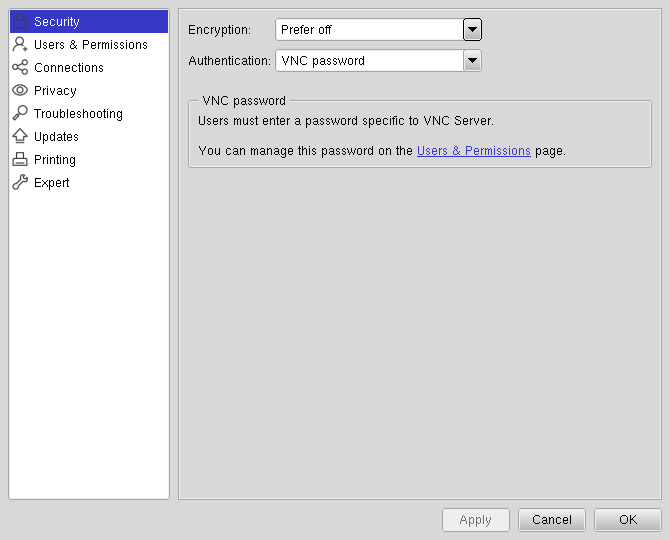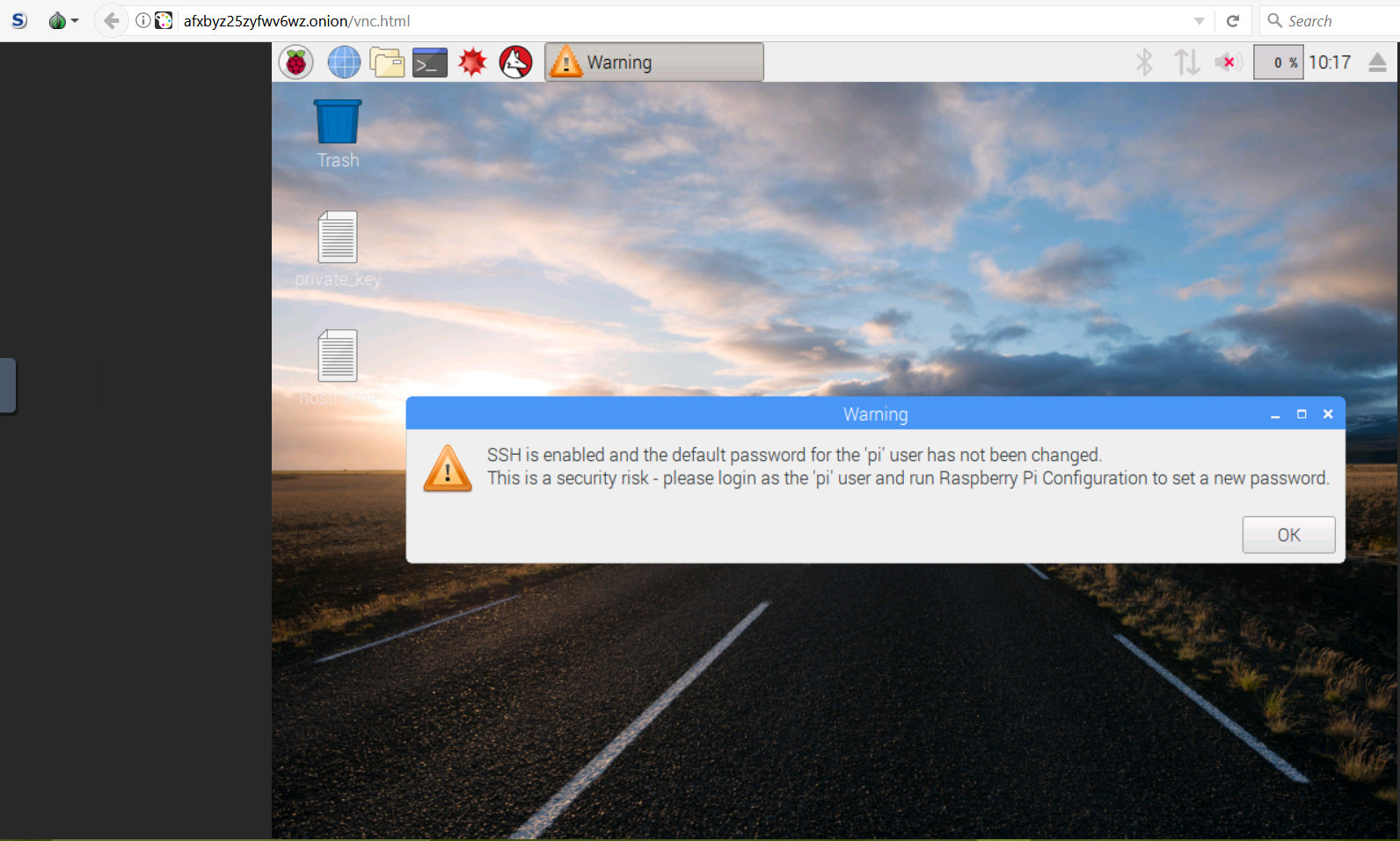Secure Raspberry Pi VNC Setup: Easy Guide & Troubleshooting
Is your Raspberry Pis remote access a potential security risk? The ease with which you can remotely access your Raspberry Pi using VNC can also be a vulnerability if proper security measures are not in place.
Remote access to your Raspberry Pi, particularly through Virtual Network Computing (VNC), opens up a world of possibilities. It allows you to control your device from anywhere, making it ideal for projects, home automation, and various other applications. However, this convenience comes with a responsibility: ensuring the security of your connection. Failing to do so can expose your Raspberry Pi, and the network it's connected to, to potential threats. This article dives deep into the world of VNC on the Raspberry Pi, exploring not only how to set it up and use it, but also, and perhaps more importantly, how to secure it against unauthorized access. We'll navigate the intricacies of VNC, offering practical advice and solutions for both beginners and seasoned users. Whether you're using the latest Raspberry Pi 5 with the Bookworm OS or an older model, the principles remain the same: understanding the risks and implementing appropriate safeguards is paramount. The goal is to empower you with the knowledge to enjoy the benefits of remote access without compromising your security.
VNC, or Virtual Network Computing, is a remote desktop protocol that essentially allows you to view and control one computer (the server) from another (the client) over a network. It works by transmitting the server's screen display and keyboard/mouse input to the client, creating a seamless remote control experience. There are numerous VNC implementations available, both free and paid, catering to various needs and operating systems. Raspberry Pi, in particular, is a popular platform for VNC, often used for headless operation (where the Pi runs without a monitor, keyboard, or mouse connected directly). This makes VNC invaluable for managing and interacting with the Pi remotely.
- Access Your Raspberry Pi Remotely Ssh Vnc More
- Explore Free Movies Alternatives To 1tamilblasters More
Before we get too deep, let's look at a few ways to keep things safe.
| Aspect | Details |
|---|---|
| What is VNC? | Virtual Network Computing. A remote desktop protocol. Allows users to access and control another computer over a network (or internet). |
| What are the Components? | Server: the computer you want to control. Client: the computer you use to control the server. |
| How does it work? | Server transmits screen display, keyboard, and mouse inputs to the client. |
| Common Uses | Remote access for headless operation, home automation, project management. |
| Security Risks | Unsecured connections are vulnerable to unauthorized access and data breaches. |
| Important Considerations | Port 5900 is the standard VNC port, needs proper security configurations. |
For further information, please visit the RealVNC website.
The default setup of VNC on a Raspberry Pi, while functional, often leaves your device vulnerable. This is primarily due to the way VNC works and the default security settings. By default, the VNC server, such as RealVNC server, on your Raspberry Pi uses a "Unix password authentication" method. This, while convenient, authenticates users with the same credentials as your system account. This means anyone who gains access to your system login credentials, or who can intercept network traffic, can potentially gain access to your entire Raspberry Pi environment.
- Onlyfans Leaks Nude Photos Aurora Aksnes More
- Hdhub4u Guide Websites Domains Hindi Dubbed Movies Discover Now
When you enable VNC on your Raspbian system, you're essentially opening a door to the outside world, and by default, VNC uses port 5900. If you're not careful, this port can become a gateway for unauthorized access. That's why it's crucial to understand how VNC works and how to secure it.
To learn more about updating and upgrading Raspbian, including to the latest version of Raspbian, check out tutorials dedicated to these topics, as keeping your operating system up-to-date is a crucial element of overall security. Regular updates often include security patches that address known vulnerabilities. Similarly, securing your VNC connection is essential to prevent unauthorized access to your Raspberry Pi. This includes choosing strong passwords, enabling encryption, and considering more advanced security measures such as VPNs or SSH tunneling.
Let's consider the options. There are several options for setting up and using VNC on a Raspberry Pi for remote access. These options include:
- Exposing VNC over the Open Internet: This can be achieved by using an external service such as RealVNCs cloud VNC viewer. This is generally a convenient method, but it does come with the caveat that it may have security implications.
- VNC over a VPN: Utilizing a Virtual Private Network (VPN) is an excellent method to secure your VNC connection. A VPN creates an encrypted tunnel between your Raspberry Pi and the client device, protecting all traffic, including VNC, from eavesdropping and unauthorized access.
- Raspberry Pi Connect: This is a free screen sharing and remote shell service provided by Raspberry Pi, offering a simplified and often more secure method for remote access.
- VNC Password Authentication: Within the VNC server settings, you can set the authentication to VNC password and set encryption to prefer off.
When you try to connect to your Raspberry Pi using VNC from your PC, you may encounter the "no matching security types" error. This often happens because the client application doesn't support the same security protocols as the VNC server. This issue has been reported across different platforms, including Solaris 10. To resolve this, configure the VNC server to use VNC password authentication (can be selected on the security page of the VNC server options dialog) and use a separate password for VNC. Other factors to be taken into consideration is the compatibility with the VNC viewer and how to deal with security types.
For those using an older laptop (Linux Mint XFCE) as a VNC viewer connected to a Raspberry Pi 4, consider the performance implications. Upgrading the client hardware or software can give a significant performance improvement and access to the latest software. Further, remember that setting up VNC can inadvertently expose your Raspberry Pi to unauthorized access. In such cases, all users on the local network may access the Raspberry Pi.
Now, let's dig a little deeper into how to secure your VNC connection. The most basic security step is to set a strong password for your VNC server. This prevents unauthorized access. In the VNC server configuration window, under "security," set the authentication method to "VNC password." Choose a strong password and apply it. Then, for optimal viewing, click on "options" and set the resolution to match your client device.
Beyond this basic step, consider these methods. For improved security, consider using a VPN (Virtual Private Network). This creates an encrypted tunnel, protecting your VNC traffic from eavesdropping. Many VPN providers offer services that can be easily set up on your Raspberry Pi. Another excellent approach is to expose SSH or VNC over the open internet within a VPN, or by using an external service like RealVNC's cloud VNC viewer.
The Raspberry Pi Foundation provides the "Raspberry Pi Connect" service. This offers a free screen-sharing and remote shell service. It's often a more secure and easier-to-use alternative to directly exposing VNC. This service removes the need to directly expose VNC on your network.
When the Wayland security model is preventing traditional remote desktop access, consider using a new VNC server, called wayvnc, instead of RealVNC. This may be a bit more restrictive in terms of the client applications which can connect to it; however, the tigervnc client is a good solution.
If you are already using an older version of RealVNC Server, be sure to restart it. If you are not, and you're already booted into the graphical desktop, go to menu > preferences > Raspberry Pi Configuration > Interfaces and make sure VNC is enabled.
Also, use a firewall. The firewall on your Raspberry Pi can be configured to block all incoming connections on port 5900 (the default VNC port) from external sources. This dramatically reduces the attack surface.
To configure your VNC server settings, open the VNC server configuration window, then under "security," set the authentication method to "VNC password." Choose a strong password and click "apply." Next, click on "options" and set the resolution to match your client device for optimal viewing. The "no matching security types" error often indicates a mismatch between the client and server security settings.
A more advanced security approach is to use SSH tunneling. SSH (Secure Shell) is a protocol that provides a secure way to connect to a remote server. You can tunnel VNC traffic through an SSH connection, encrypting the connection and adding an extra layer of security.
Here are some further steps to consider:
- Updating and Upgrading: Ensure your Raspberry Pi's operating system and packages are up-to-date.
- Firewall Configuration: Configure a firewall to restrict access to port 5900.
- VPN or SSH Tunneling: Consider using a VPN or SSH tunneling for secure remote access.
- Strong Password: Always use a strong, unique password for VNC.
- Alternative Authentication Methods: If supported, use two-factor authentication for an extra layer of security.
There are several VNC implementations to select from, both open-source and paid. In the case of tightvncserver, installation is straightforward. As the tightvncserver package is available through the Raspbian repository, all you need to do is run the command: "sudo apt install tightvncservercopy configuring the vnc server on your raspberry pi". Once you have the VNC server installed on your Raspberry Pi, configure it for connections.
When you set up VNC, you need to choose a password for remote access. However, this password alone does not guarantee security. If you wish to use other viewers, configure the server to use VNC password authentication (you can select this on the security page of the VNC server options dialog), and specify a separate password for use with VNC. Run local display mirror VNC server: "$ vncserver." If at any stage you need to change the previously defined password, you can call the vncpasswd tool: "$ vncpasswd".
For beginners and hobbyists, these steps help make VNC accessible and secure. Both RealVNC and TightVNC are suitable for the Raspberry Pi. By setting authentication to a VNC password, rather than relying solely on system account credentials, you're adding a layer of security. However, its essential to choose a strong password.
In summary, securing VNC on your Raspberry Pi is not difficult, but it requires a proactive approach. By understanding the risks, choosing the right security measures, and staying up-to-date with the latest security practices, you can enjoy the convenience of remote access while minimizing the potential for unauthorized access and data breaches. Always remember that security is an ongoing process, not a one-time fix.



Detail Author:
- Name : Evert Gleason III
- Username : flavio38
- Email : leffler.mavis@mclaughlin.biz
- Birthdate : 2002-12-21
- Address : 48008 Claudine Valleys Suite 052 Jonesside, ND 97153-8308
- Phone : +1-847-315-7014
- Company : Zboncak LLC
- Job : Boat Builder and Shipwright
- Bio : Nam aut consequatur non laudantium. Minus est voluptates ex est quidem. Dolore provident cum et. Quaerat sit in error. Nobis et maiores excepturi impedit aspernatur. Omnis aut omnis nulla.
Socials
linkedin:
- url : https://linkedin.com/in/towne1990
- username : towne1990
- bio : Et reiciendis corrupti in quos eveniet.
- followers : 5131
- following : 2228
twitter:
- url : https://twitter.com/geovanny.towne
- username : geovanny.towne
- bio : Nobis eos non quibusdam rerum cumque. Quia praesentium expedita voluptate rerum ut. Aut soluta necessitatibus alias voluptas veniam ut ex.
- followers : 760
- following : 544